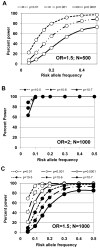Genetics and visceral leishmaniasis: of mice and man
- PMID: 19388946
- PMCID: PMC3160815
- DOI: 10.1111/j.1365-3024.2009.01102.x
Genetics and visceral leishmaniasis: of mice and man
Abstract
Ninety per cent of the 500,000 annual new cases of visceral leishmaniasis (VL) occur in India/Bangladesh/Nepal, Sudan and Brazil. Importantly, 80-90% of human infections are sub-clinical or asymptomatic, usually associated with strong cell-mediated immunity. Understanding the environmental and genetic risk factors that determine why two people with the same exposure to infection differ in susceptibility could provide important leads for improved therapies. Recent research using candidate gene association analysis and genome-wide linkage studies (GWLS) in collections of families from Sudan, Brazil and India have identified a number of genes/regions related both to environmental risk factors (e.g. iron), as well as genes that determine type 1 vs. type 2 cellular immune responses. However, until now all of the allelic association studies carried out have been underpowered to find genes of small effect sizes (odds ratios or OR < 2), and GWLS using multicase pedigrees have only been powered to find single major genes, or at best oligogenic control. The accumulation of large DNA banks from India and Brazil now makes it possible to undertake genome-wide association studies (GWAS), which are ongoing as part of phase 2 of the Wellcome Trust Case Control Consortium. Data from this analysis should seed research into novel genes and mechanisms that influence susceptibility to VL.
Conflict of interest statement
Disclosures The authors declare no conflicts of interest
Figures


References
-
- Badaro R, Jones TC, Lorenco R, et al. A prospective study of visceral leishmaniasis in an endemic area of Brazil. J Infect Dis. 1986;154:639–49. - PubMed
-
- Badaro R, Jones TC, Carvalho EM, et al. New perspectives on a subclinical form of visceral leishmaniasis. J Infect Dis. 1986;154:1003–9. - PubMed
-
- Ho M, Siongok TK, Lyerly WH, et al. Prevalence and disease spectrum in a new focus of visceral leishmaniasis in Kenya. Trans R Soc Trop Med Hyg. 1982;76:741–6. - PubMed
-
- Sacks DL, Lal SL, Shrivastava SN, et al. An analysis of T cell responsiveness in Indian Kala-azar. J Immunol. 1987;138:908–13. - PubMed
-
- Vallance P, Levick M. Drug discovery and development in the age of molecular medicine. Clin Pharmacol Ther. 2007;82(4):363–6. - PubMed
Publication types
MeSH terms
Grants and funding
LinkOut - more resources
Full Text Sources

